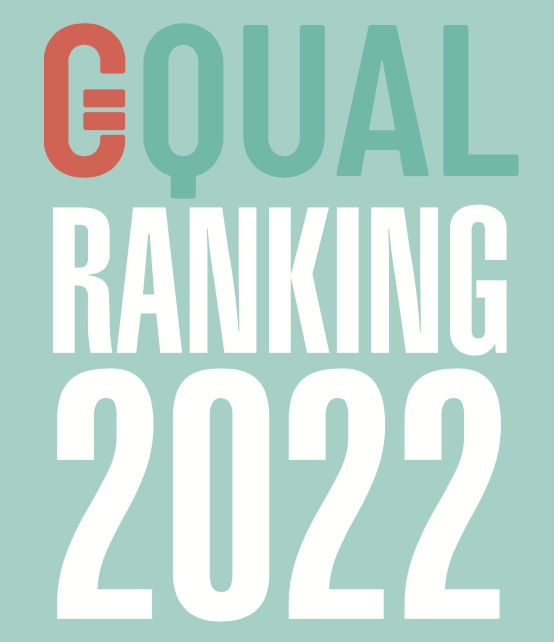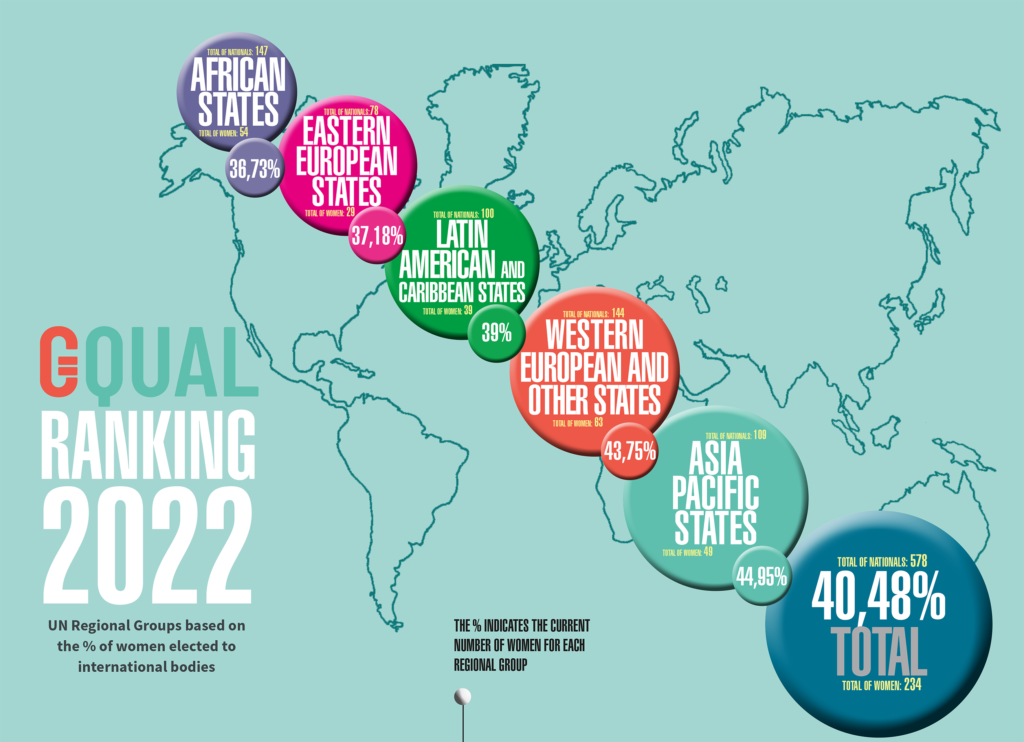Every year, GQUAL publishes the following ranking, which shows which countries have male and female national experts holding positions in international bodies monitored by the campaign, and the gender balance of that representation.
The ranking does not intend to fully reflect the gender record of each country in this area. For example, by showing only elected positions, the ranking does not reflect nominations that may have been promoted by states but did not result in elected positions. At the same time, the ranking includes positions that are not the result of State nominations, as is the case of the Special Rapporteurships and Working Groups of the United Nations Human Rights Council, where individuals can present their candidacy directly.
Nevertheless, the ranking provides very valuable information to identify trends, both in the nomination practices of the countries and the different regions, as well as in their representation record.
GQUAL encourages States to develop nomination processes and voting policies that include gender parity and representation as criteria. Consequently, we are interested in monitoring how much these trends reflect this aspiration. The ranking is also a useful and complementary tool to the analysis of the gender composition of the different bodies, which is also systematized by GQUAL and is available here.
GQUAL World Ranking
Our World Ranking classifies countries that have more than one national serving in international positions monitored by GQUAL, and disaggregates that representation by gender.
Regional Ranking
The Regional Group Ranking classifies countries according to the 5 United Nations Regional Groups and according to the percentage of national women from each group who hold positions in international bodies monitored by GQUAL.
The GQUAL Ranking step by step:
Step 1: Throughout the year we monitor the composition of all the international bodies monitored by GQUAL to identify the gender and geographical balance in their composition.
Step 2: We group the members of international bodies according to their country of origin and regional group.
Step 3: We classify the information to produce the World Ranking, a Ranking of Regional Groups and the Ranking of OAS countries.
Related Blogposts
-Dra. Liliana Ronconi. The importance of data to ensure gender equality



